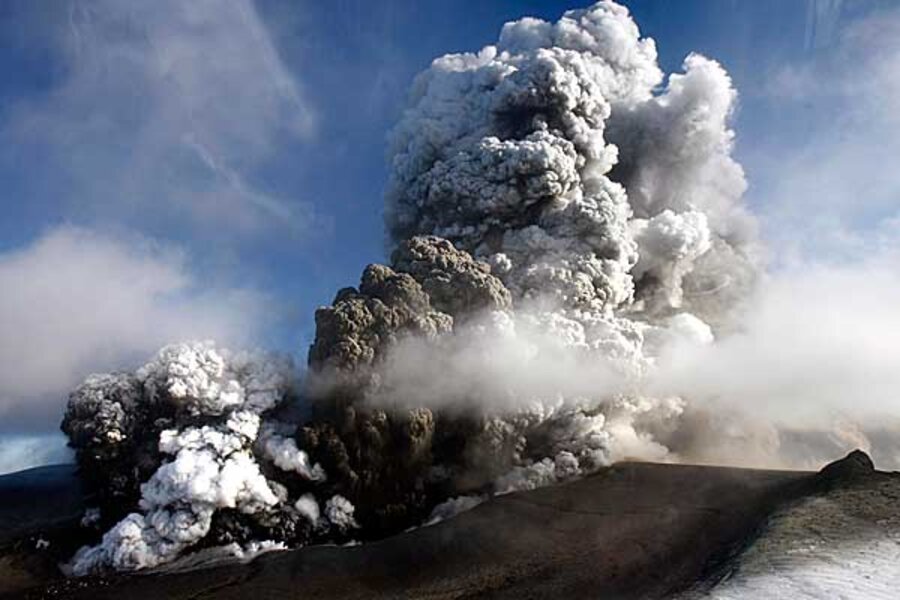Volcanic ash cloud: Where is it now – May 20?
Loading...
| Boston
European air travel continued to operate without disruptions Thursday as the volcanic ash cloud from Iceland steered clear of the mainland, though more somber news came from the announcement that the volcano caused a 20 percent drop in British air travel alone in April.
Although the volcanic eruption shows no signs of ending, May looks to be much better for airlines and their passengers, with Thursday seeing the third day in a row this week of normal operation.
“Situation today in European airspace: no impact on traffic except in parts of Iceland,” European flight monitor Eurocontrol announced on its Twitter page.
Eurocontrol spokeswoman Mireille Roman confirmed by telephone Thursday that all flight operations were normal.
The latest ash cloud map from the British Meteorological Office, the national weather service, shows a thick plume of ash spewing from Eyjafjallajökull volcano and drifting northeast for several hundred miles into the Norwegian Sea. The ash cloud reaches around and touches the tip of northern Russia.
Finland's Meteorological Institute has forecast that the ash cloud may cause problems in the airspace over northern parts of Finland this coming weekend; Norway is also bracing for interruption. But Britain’s Met Office expects clear skies through Saturday.
The United Kingdom needs the good news, as the Britain's National Air Traffic Services (NATS) announced Thursday that the six-day restriction of air travel in April contributed to a 21.2 percent reduction in flights during April, compared to the previous year.
April 2010 saw 141,956 flights in UK airspace, compared to 180,166 in April 2009.
While airlines have also suffered losses because of the financial crisis and competition from low-cost budget carriers, NATS blamed the reduction on the volcano. "This natural hazard, the scale of which has not been experienced in this region before, continues to threaten air travel and we continue to monitor volcanic activity data to try to minimise the effect on our airspace,” NATS announced on its website.
British authorities have come under fire for being overcautious in repeatedly closing of British airspace. But on Tuesday the Civil Aviation Authority announced it would allow flights through “higher ash densities than is currently permitted." This will reduce ash cloud flight disruptions.
At Eyjafjallajökull volcano itself on Thursday, the ash plume appeared to be dying down.
"The height of the ash plume has decreased in the last few days which suggests a decrease in magma flow (considerably less than 50 tonns/sec) compared to the flow over the weekend and at the end of last week. Fluctuations in eruption activity and varying ashfall can still be expected," the obervatory said in its May 20 daily update (pdf).
Related:





